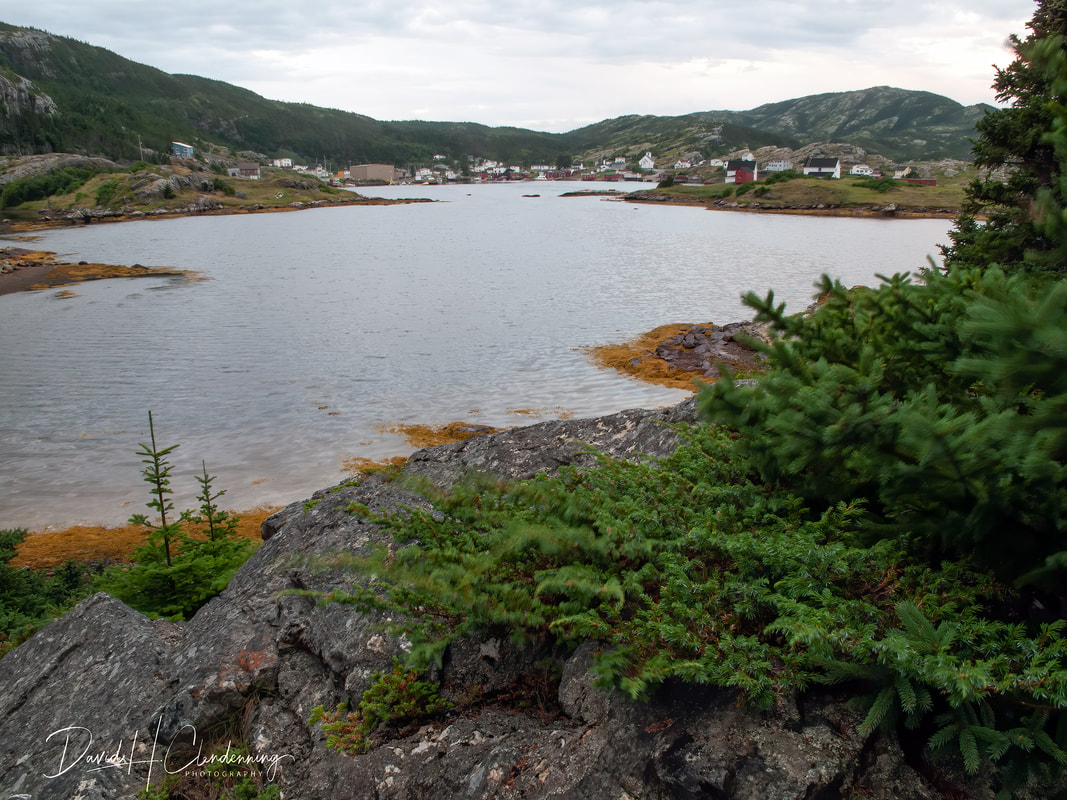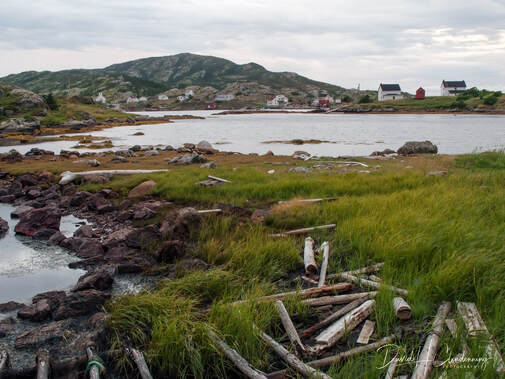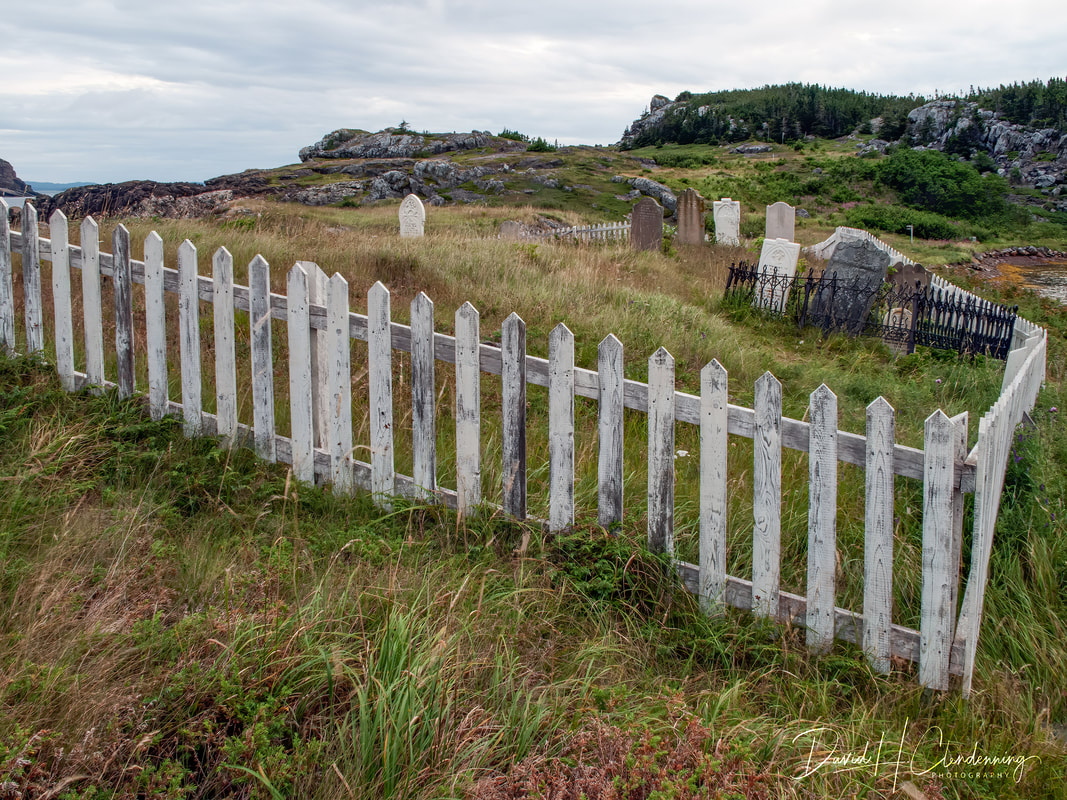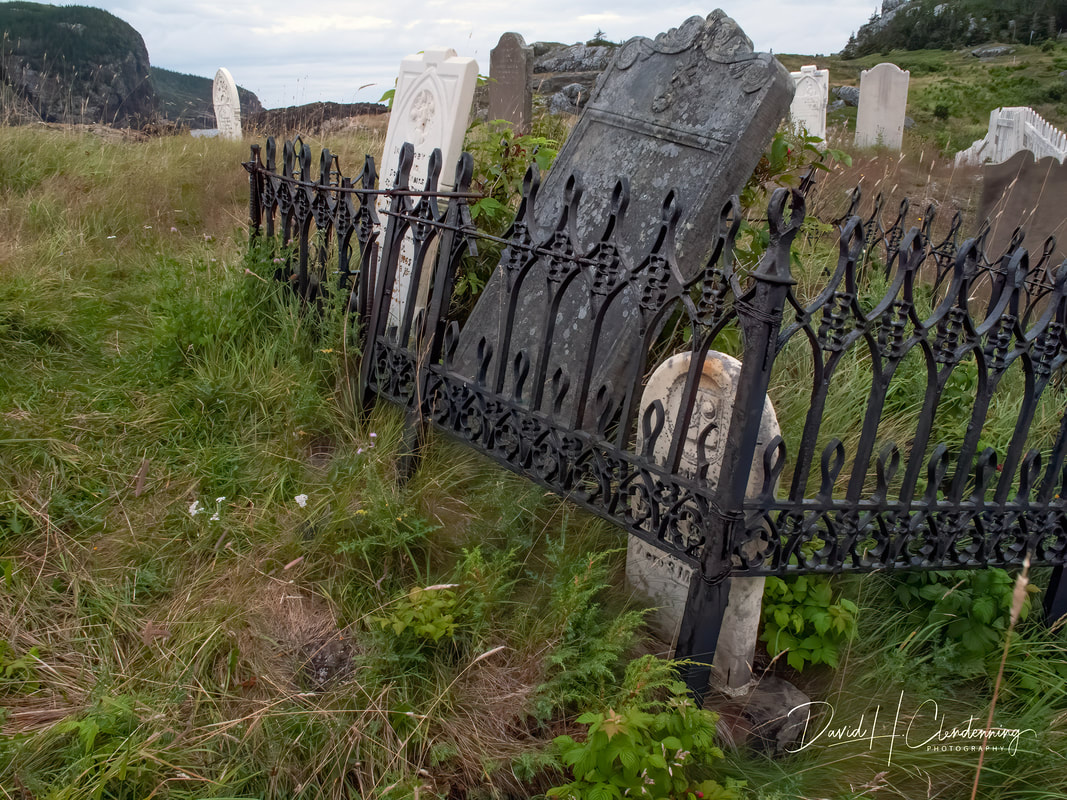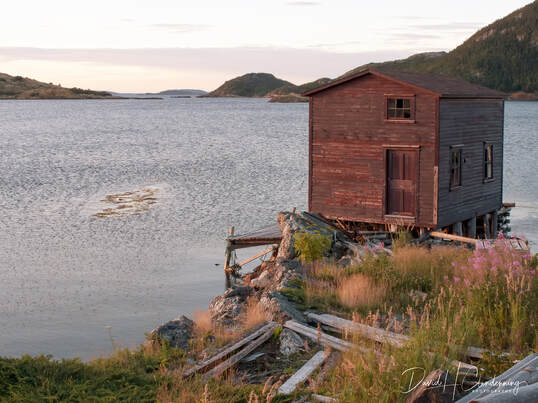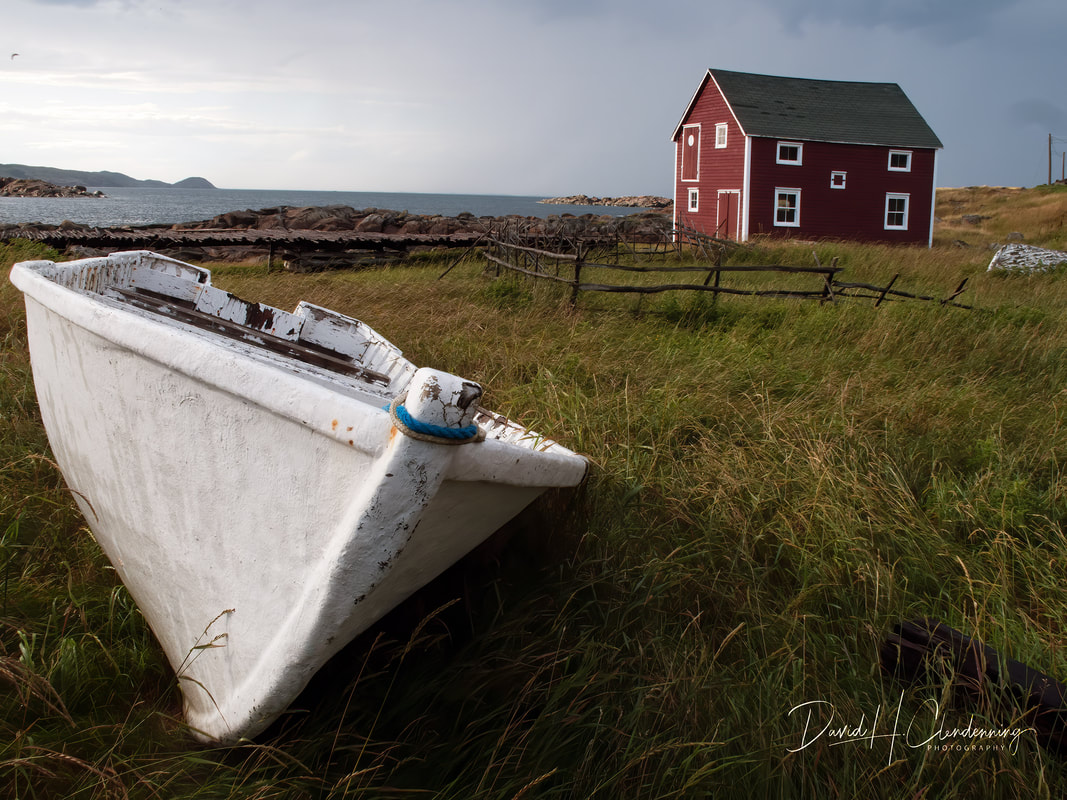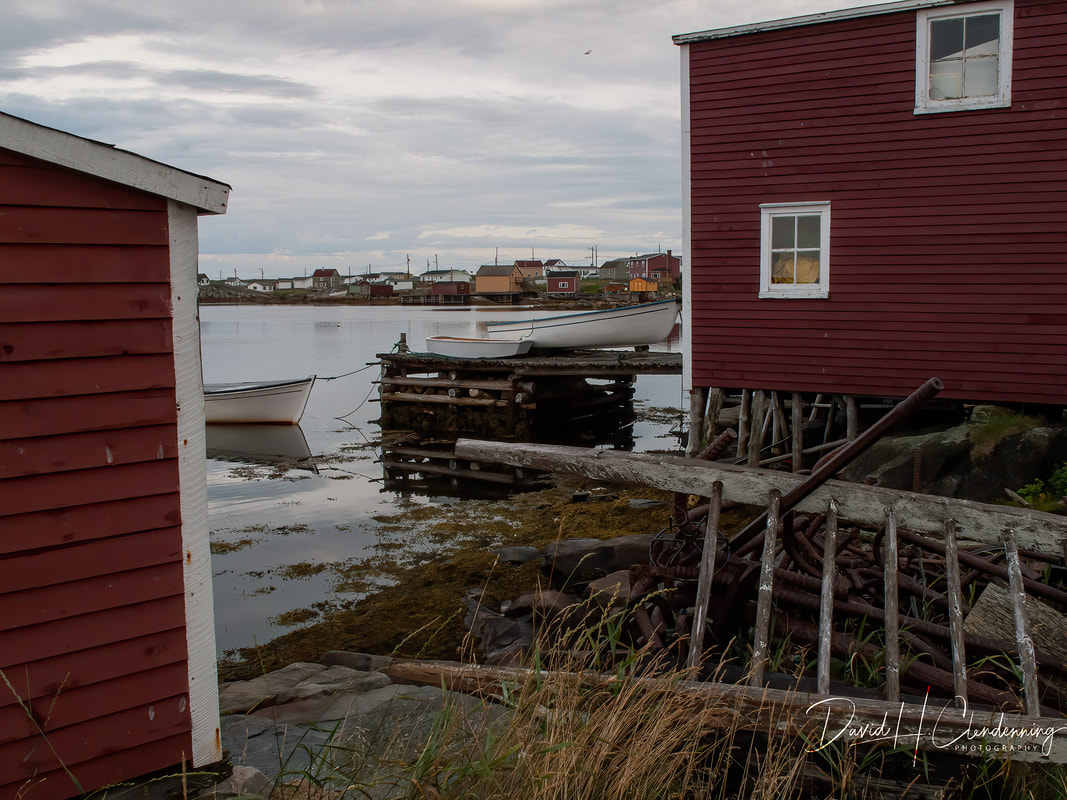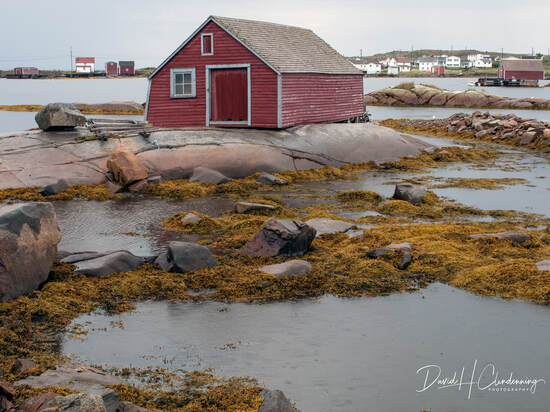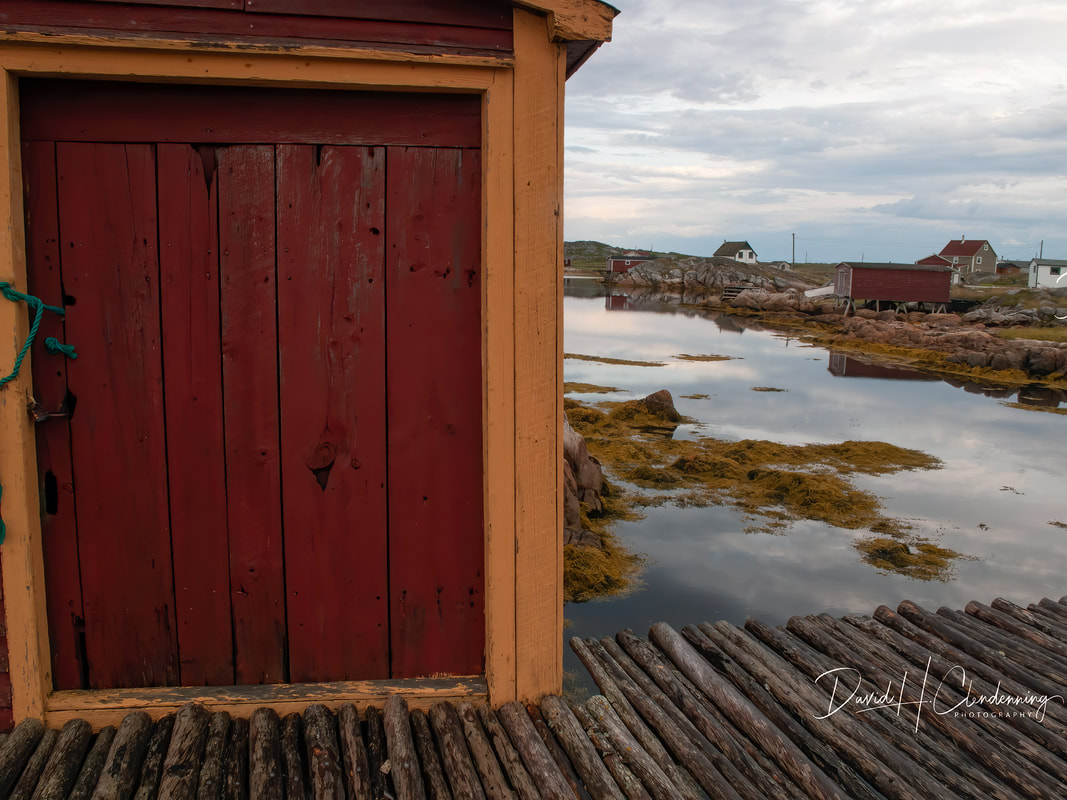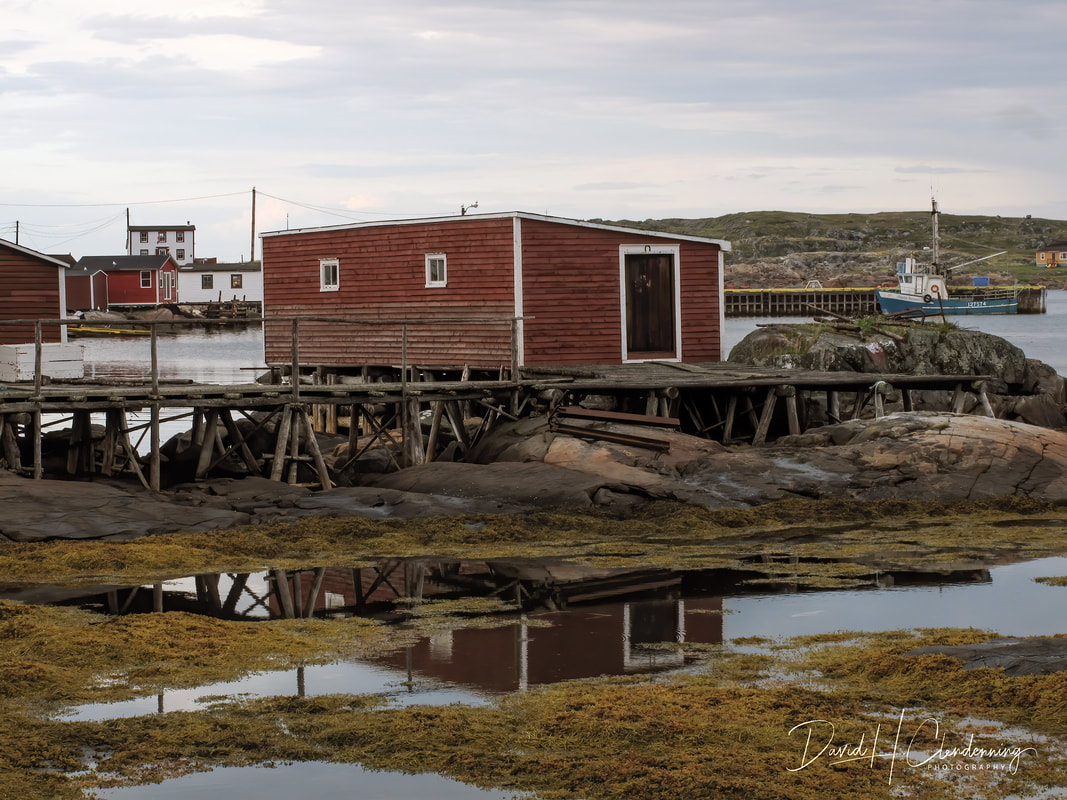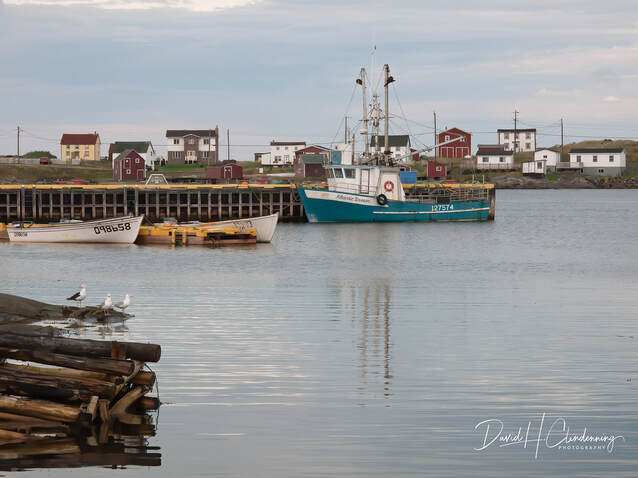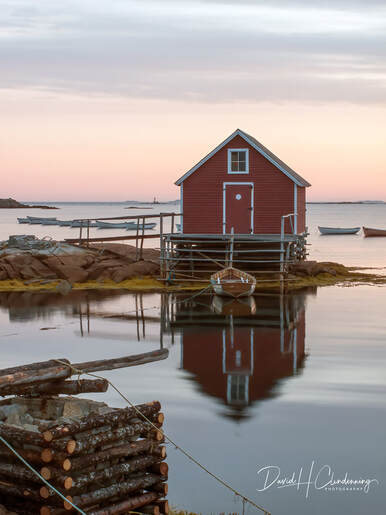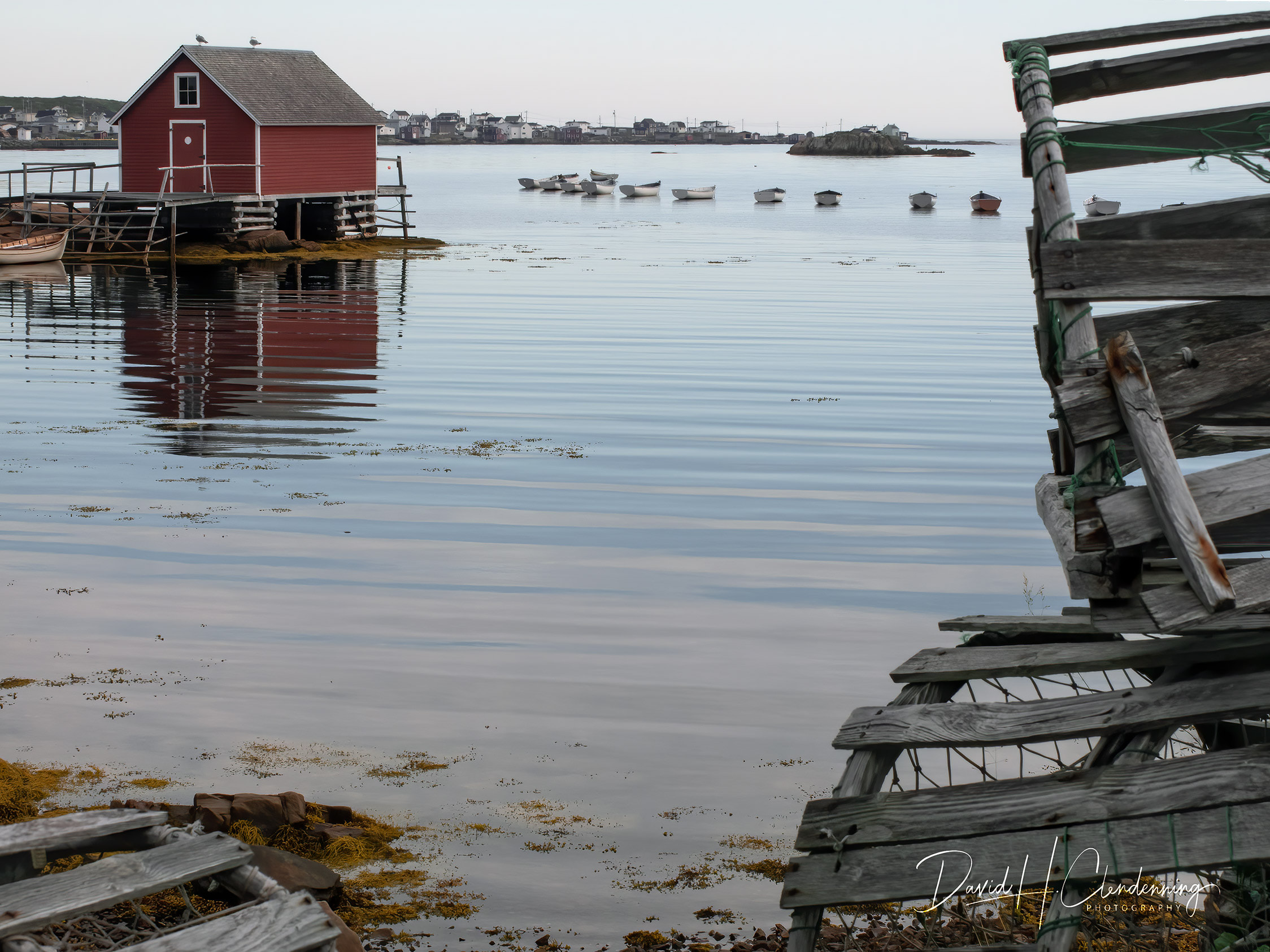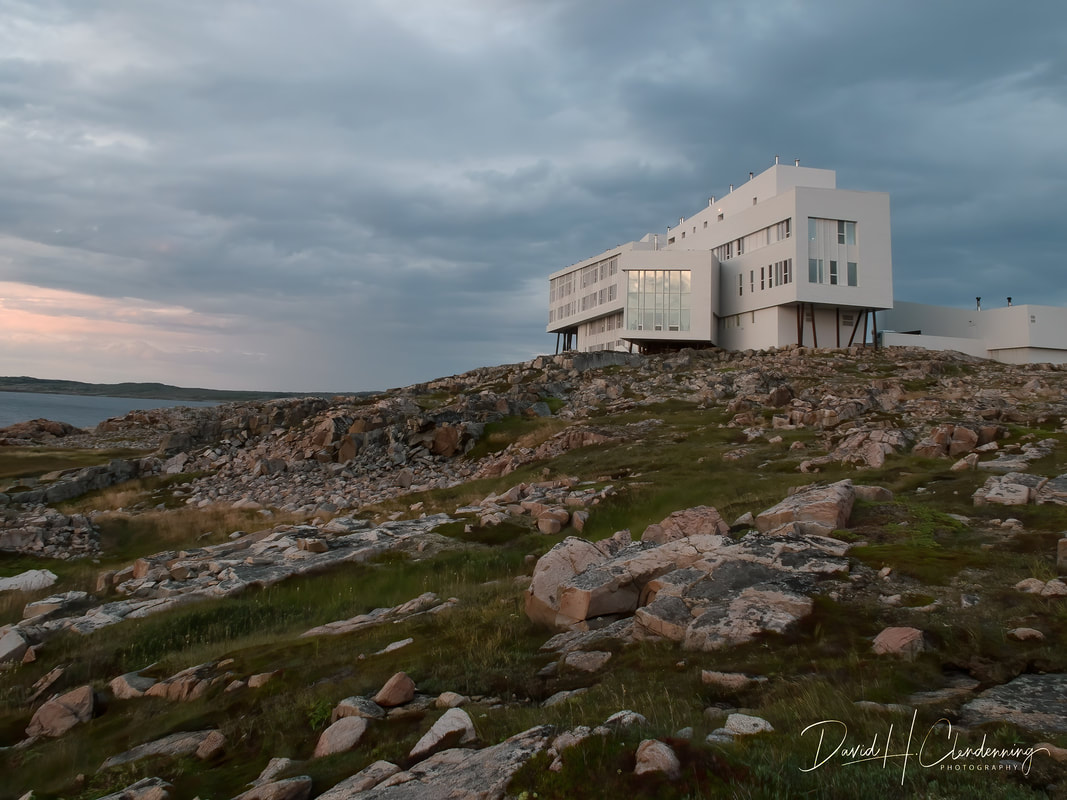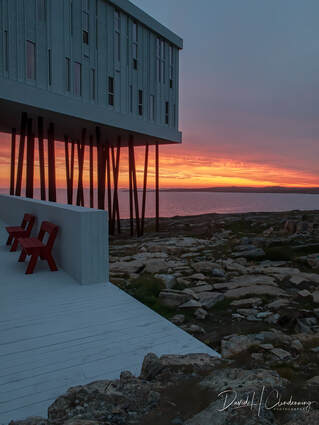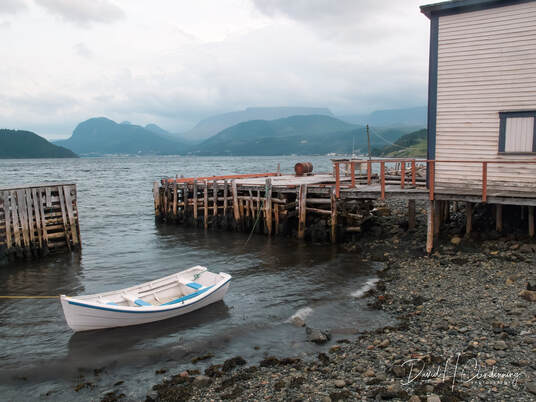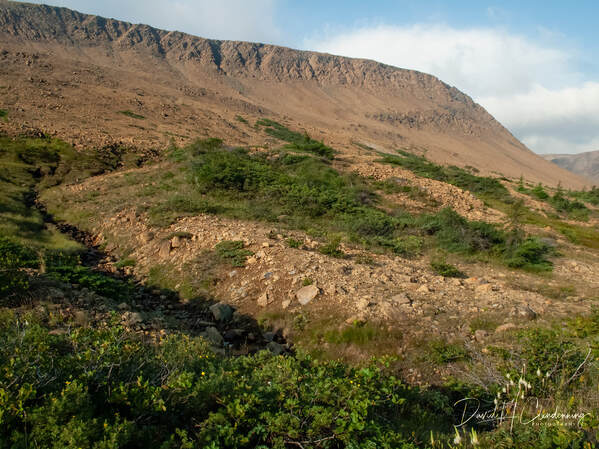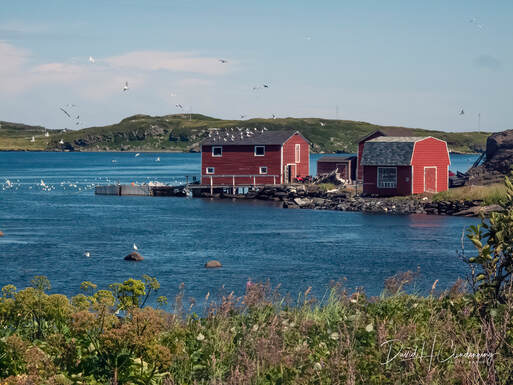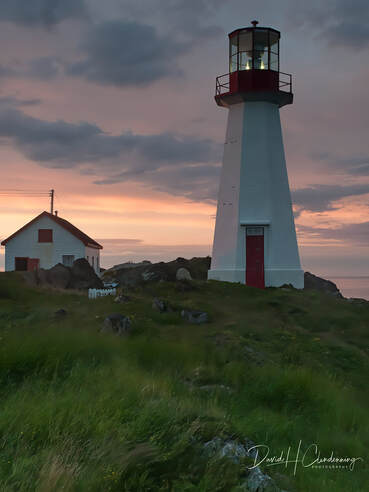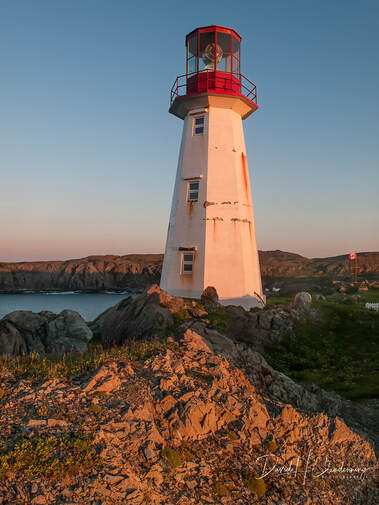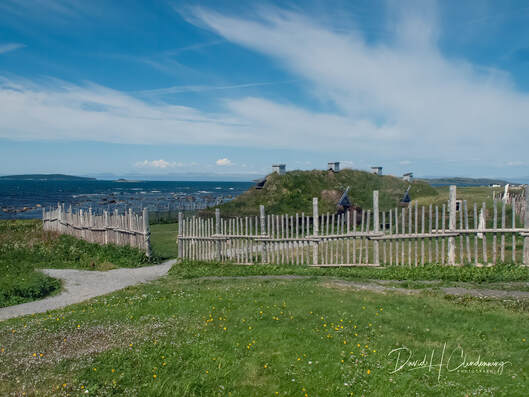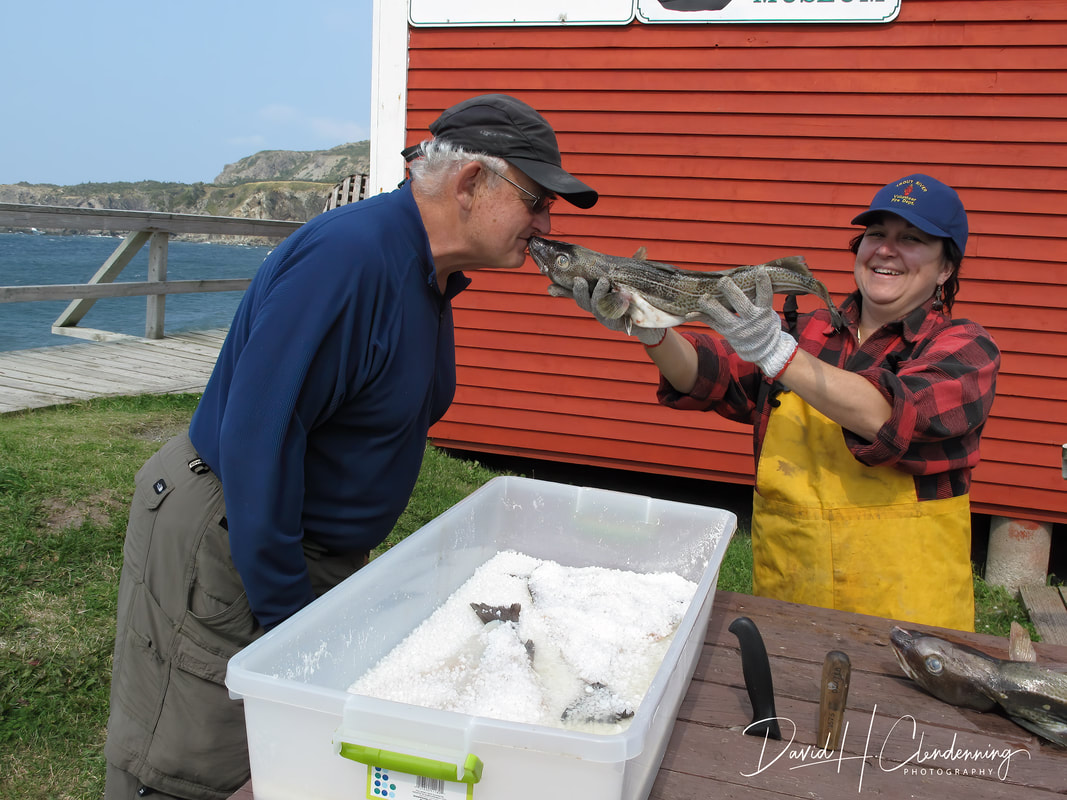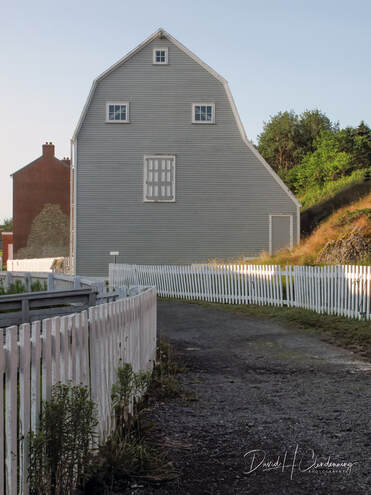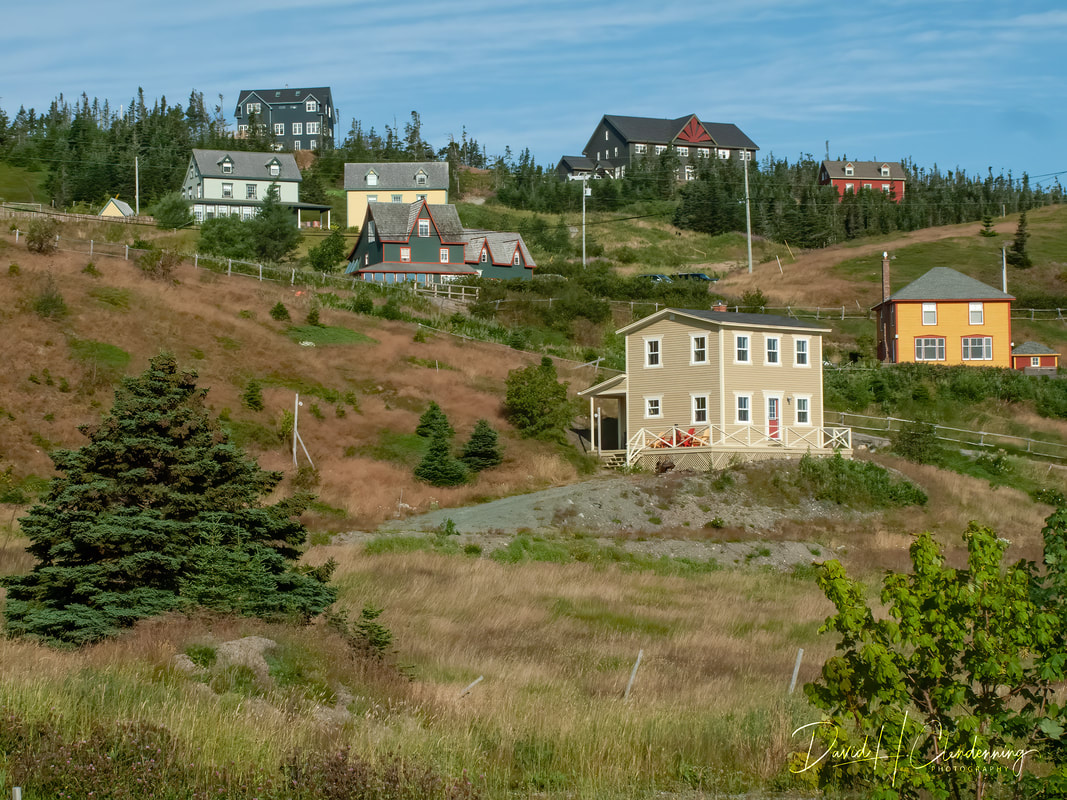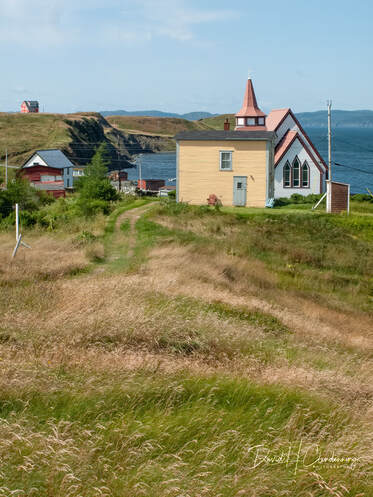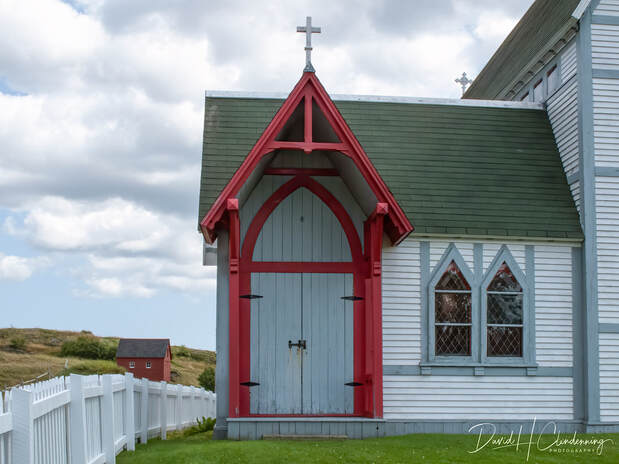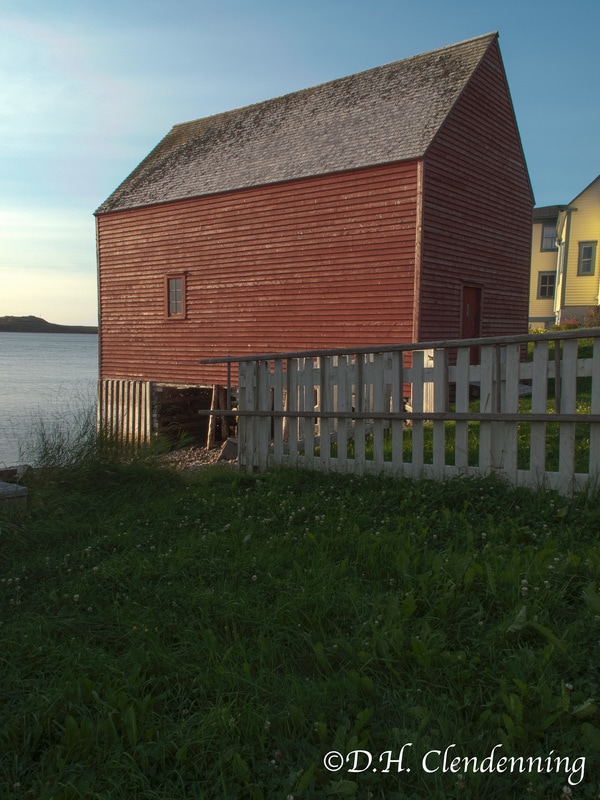Province of Newfoundland, Canada
Found…... A Sense of Peace
Click on photo to enlarge
Salvage, Central Newfoundland
Architecture on Fogo Island
Tilting Harbour, UNESCO Site
Outbuildings and Fences in Tilting
Outbuildings for many special purposes were used to supplement house storage requirements, and for fishing and agriculture. Although some outbuildings were clustered around the house, others were dispersed within extended family neighbourhoods. Ownership of these buildings would be impossible to determine by outsiders. Their locations were determined by function, circulations paths, land ownership, garden ownership, and water access rights. Outbuildings were often constructed from materials salvaged from other buildings. Houses were often turned into outbuildings if they had ceased to provide utility as dwellings, most often turning into barns or twine stores. Outbuildings were often sold and moved around the community, and their purpose could change: a fish and carpentry store could later be used as a barn. Most outbuildings were detached, single purpose structures. A few were attached.
Fences in photographs show the three types of traditional fences still present in Tilting and other locations in Newfoundland today: a paling fence, a longer fence and a picket fence. Longer and picket fences were “rinded” (bark removed) to make them last longer. The bark trapped moisture and could lead to decay. Paling fences were always painted.
Fences in photographs show the three types of traditional fences still present in Tilting and other locations in Newfoundland today: a paling fence, a longer fence and a picket fence. Longer and picket fences were “rinded” (bark removed) to make them last longer. The bark trapped moisture and could lead to decay. Paling fences were always painted.
Joe Batt's Arm
Newfoundland Fishery
The history of the Newfoundland cod fishery dates from the discovery of the North American Continent. Almost immediately English, French, Spanish and Portuguese fisherman began coming annually to Newfoundland waters to fish for cod.
During the early decades of the sixteenth century, these fishermen learned how and where to fish, and how to preserve the fish. The fish were caught by hook and line using sea birds, herring, caplin and squid for bait.
The fishermen would fish off the banks of Newfoundland where fish could always be found. The catch was salted on board the ships and brought back to Europe to be dried and sold. The English fisherman did not have access to the supplies of salt that were available to the others and could not salt their fish to the same extent. They were however able to develop a system which combined light salting for a short period, followed by thorough washing, and then drying in the open air. The result was a light salted product for which Newfoundland eventually became famous.
The early fishery was a truly international affair with the four leading nations of Western Europe participating. However, wars in the late sixteenth century eliminated Spanish and Portuguese fisheries. Thereafter, the Newfoundland cod fishery was shared seasonally every summer, by the English and French. As a result of the wars in the early eighteenth century, France gave up its fishery on the South Coast and received in return the right to fish on the West Coast and Northern Peninsula. They retained this right until 1904 when by mutual agreement they relinquished it to the Newfoundland residents.
These Newfoundland residents were descended from two groups, the fishermen who originally came to fish on a seasonal basis returning to England at the end of each summer and the Irish who came to work with the fishermen and stayed. The fishing ships were gradually replaced by trading ships, which came to exchange goods for fish. In order to maintain a supply of goods, warehouses and mercantile establishments were erected in some fishing ports.
During the early decades of the sixteenth century, these fishermen learned how and where to fish, and how to preserve the fish. The fish were caught by hook and line using sea birds, herring, caplin and squid for bait.
The fishermen would fish off the banks of Newfoundland where fish could always be found. The catch was salted on board the ships and brought back to Europe to be dried and sold. The English fisherman did not have access to the supplies of salt that were available to the others and could not salt their fish to the same extent. They were however able to develop a system which combined light salting for a short period, followed by thorough washing, and then drying in the open air. The result was a light salted product for which Newfoundland eventually became famous.
The early fishery was a truly international affair with the four leading nations of Western Europe participating. However, wars in the late sixteenth century eliminated Spanish and Portuguese fisheries. Thereafter, the Newfoundland cod fishery was shared seasonally every summer, by the English and French. As a result of the wars in the early eighteenth century, France gave up its fishery on the South Coast and received in return the right to fish on the West Coast and Northern Peninsula. They retained this right until 1904 when by mutual agreement they relinquished it to the Newfoundland residents.
These Newfoundland residents were descended from two groups, the fishermen who originally came to fish on a seasonal basis returning to England at the end of each summer and the Irish who came to work with the fishermen and stayed. The fishing ships were gradually replaced by trading ships, which came to exchange goods for fish. In order to maintain a supply of goods, warehouses and mercantile establishments were erected in some fishing ports.
Fogo Island Inn - Coastal Modern
Innovative and stylish.
A world class sustainable building
Gros Morne and Northern Peninsula
Powerfully evocative
Two views of Quirpon Island Lighthouse, Northern Peninsula
The Norse: Trading for Wealth and Status
For the Norse, the sharing or giving of exotic goods was an important way to display political power. The Norse trading world extended from Greenland to Baghdad. It involved the trans-shipment of luxury goods including silver, copper, tine, velvet, ivory, glass, spices, wine, weapons, and ceramics, and mundane items such as salt, flour, soapstone, iron, furs, and slaves. Norse trading was not a free market, it was controlled by kings and chieftains who took a share of every profit.
Viking Settlement in Vinland
In Vinland and Markland, the Norse were seeking goods that were not available in Greenland or Iceland, goods that would bring them a high price and pay for their expeditions. According to the sagas, the most valuable items seem to have been lumber, hardwood burls, furs (marten and grey squirrel), and grapes.
From Fair Trade to Trading Blows
Both the Norse and the Aboriginal people were accomplished long-distance travellers and traders. The sagas relate that as soon as Aboriginal people saw the Norse, they attempted to engage them in trade. However, the Norse and the Aboriginal people could not talk to each other, and later encounters ended badly.
The Aboriginal Peoples: Trading to Maintain Social Networks
Aboriginal peoples in the area lived in small, highly-mobile hunter-gatherer groups Trade was an important way of strengthening social ties with neighbouring groups. During trade people could exchange important information, arrange alliances, and search for marriage partners.
Aboriginal North Americans travelled great distances. They traded stone, tools, shell, copper, and probably more perishable materials such as furs, foodstuffs, and plant products.
For the Norse, the sharing or giving of exotic goods was an important way to display political power. The Norse trading world extended from Greenland to Baghdad. It involved the trans-shipment of luxury goods including silver, copper, tine, velvet, ivory, glass, spices, wine, weapons, and ceramics, and mundane items such as salt, flour, soapstone, iron, furs, and slaves. Norse trading was not a free market, it was controlled by kings and chieftains who took a share of every profit.
Viking Settlement in Vinland
In Vinland and Markland, the Norse were seeking goods that were not available in Greenland or Iceland, goods that would bring them a high price and pay for their expeditions. According to the sagas, the most valuable items seem to have been lumber, hardwood burls, furs (marten and grey squirrel), and grapes.
From Fair Trade to Trading Blows
Both the Norse and the Aboriginal people were accomplished long-distance travellers and traders. The sagas relate that as soon as Aboriginal people saw the Norse, they attempted to engage them in trade. However, the Norse and the Aboriginal people could not talk to each other, and later encounters ended badly.
The Aboriginal Peoples: Trading to Maintain Social Networks
Aboriginal peoples in the area lived in small, highly-mobile hunter-gatherer groups Trade was an important way of strengthening social ties with neighbouring groups. During trade people could exchange important information, arrange alliances, and search for marriage partners.
Aboriginal North Americans travelled great distances. They traded stone, tools, shell, copper, and probably more perishable materials such as furs, foodstuffs, and plant products.
Iron Dependency (Iron-clad Evidence)
From its origins about 4,000 years ago, probably in the Middle East, iron-working technology spread throughout Europe. By the time that the Norse reached North America, their culture had been built around this metal for 1,500 years. Although iron from meteorites had been worked by worked by Aboriginal peoples in North America, nowhere was iron iron smelted, so iron smelting defines the European component of the L'Anse-aux-Meadows site. (Iron nails manufactured at this site have been discovered).
Making Iron in the Viking Age
Artefacts found at L'Anse-aux-Meadows show that iron was produced here 1,000 year ago from local bog ore using a short shaft furnace.
The smelting process:
- Bog ore (iron oxide) is roasted to dry it out and burn off any plant material.
- The clay-walled furnace is fired up, and air is pumped in by bellows.
A- Ore is added along with charcoal.
B- Combustion - The burning charcoal produces super-heated carbon monoxide gas.
C- Reduction - The gas reacts with the iron oxide, reducing it to particles of metallic iron.
D- Collection - The heavy sticky iron fall to the bottom of the furnace, collecting into a mass - the bloom.
- The non-iron material (sand, clay) drains to the bottom and congeals as a bowl of slag or flows away.
From its origins about 4,000 years ago, probably in the Middle East, iron-working technology spread throughout Europe. By the time that the Norse reached North America, their culture had been built around this metal for 1,500 years. Although iron from meteorites had been worked by worked by Aboriginal peoples in North America, nowhere was iron iron smelted, so iron smelting defines the European component of the L'Anse-aux-Meadows site. (Iron nails manufactured at this site have been discovered).
Making Iron in the Viking Age
Artefacts found at L'Anse-aux-Meadows show that iron was produced here 1,000 year ago from local bog ore using a short shaft furnace.
The smelting process:
- Bog ore (iron oxide) is roasted to dry it out and burn off any plant material.
- The clay-walled furnace is fired up, and air is pumped in by bellows.
A- Ore is added along with charcoal.
B- Combustion - The burning charcoal produces super-heated carbon monoxide gas.
C- Reduction - The gas reacts with the iron oxide, reducing it to particles of metallic iron.
D- Collection - The heavy sticky iron fall to the bottom of the furnace, collecting into a mass - the bloom.
- The non-iron material (sand, clay) drains to the bottom and congeals as a bowl of slag or flows away.
I sat upon a rocky shore |
Bonavista Peninsula including Trinity Bay, Port Reston and English Bay
